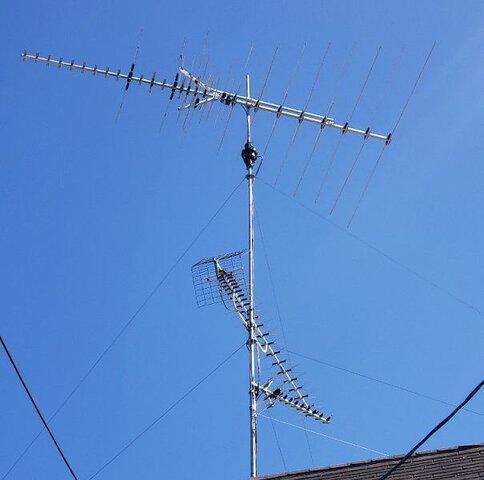I'll just add that despite Low VHF's advantage of traveling farther and it having cheaper power requirements, at least in the way, way early years of Low VHF's use in broadcast TV, one could at least get a very poor image when other channels would show snow, its cancer is NOISE. Low VHF, for several decades had suffered tremendously as our world has moved forward in technology and ever more RF "littering" our skies and landscapes. Getting a Low VHF broadcast channel with even a barely passing PQ as far back as the 1970's was nearly impossible in the LA area because the picture was littered with visible noise and it was more susceptible to noise from house wiring, as well. Now, the High-VHF was shockingly easy to get a great PQ with little effort almost anywhere, and still is the most robust signal strength I can measure. Of course, matters of myriad transmitter power restrictions on UHF bands of OTA channels plays a part in High-VHF being the KING of reliability of signal even today. Let's remember that in the early years cable's big draw in the LA/Socal area was not necessarily its content, but is ability to provide local stations with far more reliability and better picture quality in what was an absolute maze of obstructions (and other reasons) that made enjoying OTA TV a frustrating and inferior experience for far too many residents in the area, and I mean areas that were OUTSIDE of CATV required areas.
As for TVFool and other such sites: YMMV--especially in the Los Angeles and southern California area. LA is riddled with hills, mountains, canyons, valleys, all manner of man-mad obstructions including lots of buildings, and LOTS and LOTS of RF NOISE! Yeah, depending on one's home location in San Juan Cap on a hill or perhaps at a lower point in SJC, but with no hills obstructing the line of eye site to some transmitter in Riverside (KVCR), some people are gonna get KVCR really strong, while most outside the IE won't. And even within the IE, it is still a crap shoot. I have found that sites like TVFool to be as accurate as they can be, but it is very difficult for those sites to adjust those general predicted ratings of reception in the obstructed, mega RF noisy area called Los Angeles/southern California. In the LA/SoCal area, the home that gets all OTA broadcast channels pretty strong is just a few blocks from the home that has no hope and of getting ANY broadcast OTA signals AT ALL, often because they are just a little too close to that hill than that other house 2 blocks away that gets all the OTA signals.
There is also another issue of transmitters on Mt. Wilson, and those on nearby and lower elevation Mt. Harvard that make all the difference in the world to people trying to get the OTA channels they want. The thing is, that TVFool may have been spot on if you were at the home just TWO DOORS down. Not your fault, but I don't think TVFool or other sites that have nearly identical info should be expected to be a perfect match for all homes in the very messy LA/SoCal area. Yeah, most of San Juan Cap is probably going to get San Diego stations more reliably since there are virtually no obstructions in that direction, but obstructions may existe if aiming towards Mt Wilson and Mt. Harvard--and the vast majority of people in SoCal really want the LA stations much more than SD ones, anyway, so it is a big yawn when you tell folks they can get the SD stations instead. Believe me. I know many people in the SD DMA who would gladly take LA TV stations over SD ones any day, and my family in Temecula thank the heavens they are in the LA DMA and not the SD DMA. I LOVE San Diego and its perfect, beautiful bay, but the people there have had a hunger for LA TV stations for DECADES.
Well, I just hope no LA stations move to Low-VHF not only because of its inherent disadvantages, but because a lot of people have antennas that can not receive Low-VHF anyway. Well, let's just suffer through the re-pack together.


